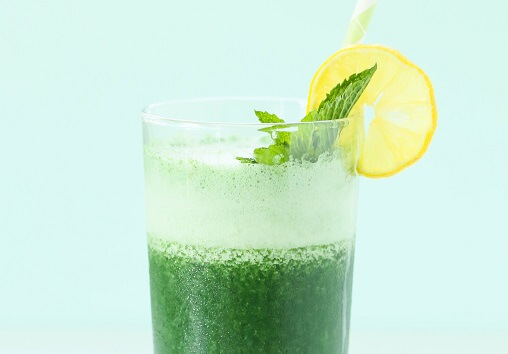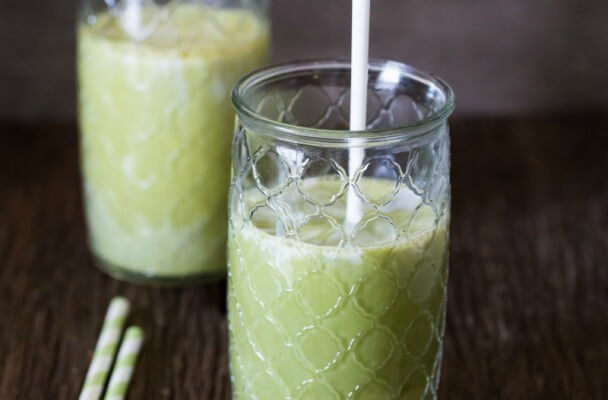Liquid Diet
For most of us, the liquid part of a meal is an afterthought. Water, wine, milk, smoothies, sauces and broths? The options are endless, but they tend to complement a meal rather than create its base. However, when following a liquid diet, no solids are allowed. This makes it imperative to learn how to balance your nutritional needs while following the liquids-only restriction on your diet.
What Is a Liquid Diet?
As its name suggests, a liquid diet includes only foods that come in liquid form. This includes any food that is a liquid at room temperature. So, for example, ice cream may be permitted on a liquid diet while a muffin would not (Wax, 2014). Unlike many diets, which are undertaken for the purpose of losing weight, a liquid diet is most often recommended for certain medical conditions. Solid foods may exacerbate gastrointestinal health or other body systems when you are experiencing medical problems. As a result, your doctor may recommend an all-liquid diet to help ease your symptoms.
Medical Reasons to Follow a Liquid Diet
Because it can be challenging to get the appropriate nutrients while following a liquid diet, this diet should only be followed under the supervision of a physician. There are several medical conditions that may warrant a liquid diet. Possible medical reasons to follow this kind of diet include:
- Crohn’s disease or ulcerative colitis. People with Crohn’s disease or ulcerative colitis have a medical condition in which their intestines become inflamed. For Crohn’s disease sufferers, this leads to lesions in the lining of the digestive system. These diseases lead to persistent diarrhea, abdominal cramping, rectal bleeding, and constipation (Crohn’s and Colitis Foundation of America, 2015). Crohn’s disease is characterized by flare-ups, meaning that symptoms are more intense at certain times than others. During a flare-up, the goal is to reduce the number of bowel movements you have. Following a liquid diet is a good way to reduce the amount of bulky solids passing through the gastrointestinal tract.
- Post-surgery recovery. Following surgery, your surgeon may recommend a liquid diet to help you recover. This is particularly important for surgery affecting the stomach or intestines, as it is necessary to reduce strain on the gastrointestinal system. Ask your doctor about specific diet requirements for following a liquid diet after surgery.
- Nausea or vomiting. People with food poisoning, a severe stomach flu, or other serious health problems may continuously vomit or feel nauseated. In these cases, a liquid diet may be helpful to ensure that you get some nutrients while regaining your equilibrium.
- Colonoscopy or other medical procedure. Certain medical procedures require you to follow an all-liquid diet for a given amount of time before the procedure. A colonoscopy is a good example. Because your doctor will be examining the interior of the colon, it is necessary to clear the colon of solid waste beforehand. Following a liquid diet facilitates this process.
Safety of a Liquid Diet Outside of a Medical Setting
A liquid diet is primarily recommended for individuals with a medical condition or those who are planning to undergo a specific medical procedure (Bowman, 2014). Liquid diets are not recommended for general weight loss. The reason for this is that it can be difficult to get enough calories on a liquid diet. Even if you do get enough calories to fuel your body, you may be lacking critical nutrients that are found in a balanced diet. Thus, a liquid diet is not considered a sustainable weight loss solution (Storrs, 2014).
Among people trying to lose weight, liquid diets are more commonly used to jumpstart a weight loss regimen. Juice fasting, the Master Cleanse, and other cleanse plans often limit adherents to liquids only. Although a short-term liquid diet cleanse may not hurt your body, these cleanse plans are not always safe (Zeratsky, 2015). A liquid diet may severely limit your consumption of protein, healthy fats, and beneficial micronutrients. Thus, long-term use of a liquid diet may result in fatigue, vitamin deficiencies, and gastrointestinal distress (Zeratsky, 2015). It is best to consult your doctor before following an all-liquid diet plan to ensure you get the nutrients your body needs.
Restrictions of a Liquid Diet
The specific restrictions of a liquid diet depend on the purpose of the diet. Certain situations may require you to follow a clear liquid diet, which is more restrictive than a general liquid diet. This is most common preceding a medical procedure such as a colonoscopy. To comply with clear liquid diet regulations, you may drink the following (Mayo Clinic, 2015):
- Water, which may be plain, carbonated, or flavored (adding a lemon wedge can help make yours more palatable)
- Pulp-free fruit juices
- Fruit-flavored beverages, including lemonade or fruit punch
- Soda and other carbonated beverages
- Sports drinks
- Gelatin
- Vegetable or tomato juice, provided that it is well strained to remove any solid particles
- Tea (no milk allowed, but dissolved sugar is okay)
- Coffee (no milk or cream allowed)
- Honey
- Sugar
- Hard candies
- Clear, fat-free broth, such as broth made from bouillon
- Ice pops that do not contain milk, seeds, nuts, or fruit solids
If there are no restrictions that the liquid diet must only include clear liquids, the guidelines are somewhat more lax. This allows you to eat foods that contain more fat or carbohydrates than permitted on a clear liquid diet (Wax, 2014). Consider the following foods that are allowed on a general liquid diet:
- Milk
- Ice cream
- Vegetable juices
- Pudding
- Custard
- Fruit juices, including those that contain pulp
- Jell-O
- Butter
- Cream
- Broth
- Strained creamy soups
- Popsicles
In some cases, cooked cereals such as cream of wheat, grits, or oatmeal may be permitted. It may also be acceptable to eat potatoes that have been pureed in soup. However, any raw or cooked vegetables, fruit, meat, or cheese is prohibited on a full liquid diet (Wax, 2014).
Nutritional Considerations When Following a Liquid Diet
The purpose of a liquid diet is to provide your body with easily digestible food while trying to get the protein, salts, fluids, and minerals you need to sustain your tissues. When following a liquid diet, aim to get at least 1,350 to 1,500 calories per day (Wax, 2014). At the same time, it is best to get around 45 grams of protein per day. Protein can be obtained from dairy products, pudding, or protein shakes.
While following an all-liquid diet, it is important to avoid getting too much sugar. Many liquids, such as fruit juices or sodas, are very high in sugar. Because excess sugar can exacerbate Crohn’s disease (Storrs, 2014), be vigilant about your sugar consumption if you are following a liquid diet to reduce Crohn’s symptoms.
To ensure you have success while following a liquid diet, plan ahead and make sure your meals are convenient. Making a large batch of homemade broth or clear soup is a great way to ensure you have something to eat. Keeping your refrigerator stocked with pudding cups, almond or soy milk, meal replacement shakes, and Jell-O is a good strategy.
If you have a medical condition such as diabetes, following a liquid diet may not be advised. Discuss your options with your doctor to ensure you stay safe.
Recipes for Select Liquid Diets
Below are two simple smoothies you may be able to enjoy on a more lenient liquid diet. We hope that you enjoy these recipes and the nutrition they offer during your period of recovery.

Spirulina Smoothie Recipe
This simple smoothie is a blend of fruits, juices and powders to provide a nutritious beverage that’s ideal for hot summer days. Enjoy the nutritive value of spirulina and the tart taste of apple and try this recipe today!
Ingredients: Spirulina, banana, fresh spinach, apple juice, crushed ice, lemon juice.
Total Time: 2 minutes
| Yield: 2 smoothies

Matcha Green Tea Latte Recipe {Vegan}
Matcha green tea offers a number of benefits to your health while the sweet savors of vanilla and coconut make for a pleasant treat to enjoy on any occasion. Try this wholesome latte today!
Ingredients: Matcha green tea powder, sugar, vanilla extract, almond milk, coconut milk, coconut cream.
Total Time: 5 minutes
| Yield: 4 servings
Ingredients to Help Accommodate Your Liquid Diet
Below are some teas, powders, and liquids that may help you enjoy your liquids whilst restricted to the diet. Peruse the options below and find more coffees and teas, including flavored options, here.
Healthy Eating
- Healthy Snacks
- Healthy Highlights
- 5 Uses for Cacao Powder
- 5 Ways to Eat Farro
- 6 Best Gluten-Free Foods
- Alcohol and the Body
- Almond Flour Recipes
- Anti-Aging Superfoods
- Beat the Afternoon Slump
- Benefits of a Plant-Based Diet
- Benefits of Baobab
- Benefits of Cashews
- Benefits of Coconut Oil for Hair
- Benefits of Coconuts
- Benefits of Dates
- Benefits of Fenugreek
- Benefits of Garcinia Cambogia
- Benefits of Goji Berries
- Benefits of Kale Chips
- Benefits of Monk Fruit Sweetener
- Benefits of Peanuts
- Benefits of Pecans
- Benefits of Pistachios
- Benefits of Pumpkin Seeds
- Benefits of Spelt Flour
- Benefits of Steel Cut Oats
- Benefits of Sunflower Seeds
- Benefits of Tiger Nuts
- Benefits of Turmeric
- Benefits of Walnuts
- Benefits of Wheatgrass
- Best Food Fads
- Cacao vs Cocoa
- Caffeine-Free Energy Foods
- Chocolate That's Good for You
- Diet vs. Exercise
- Fat Burning Foods
- Food Myths Debunked
- Foods for Bone Density
- Foods for Colon Health
- Foods for Healthy Hair
- Foods for Healthy Skin
- Foods to Help Sleep
- Foods to Reduce Stress
- Green Tea Benefits
- Healthy Baking Flours
- Heart Healthy Habits
- High Protein Health Risks
- How to Boost Your Metabolism
- How to Lose Weight While Aging
- How to Throw a Vegan BBQ
- Kaniwa vs Quinoa
- Little Health Foods
- Low-Carb: Fad or Friend?
- Making Healthier Desserts
- Mediterranean Diet Meal Plan
- Natural Beauty Products
- Nuts for Weight Loss
- Preparing Vegan Meals
- Preventing Muscle Degeneration
- Rare Superfoods
- Reduce Sugar Intake
- Save Time By Going Vegan
- Smarter Snack Swaps
- Smoothie Ingredients
- Soy Protein vs Whey Protein
- Starting a Plant-Based Diet
- Steel Cut vs Rolled Oats
- Sugar Substitutes
- Vegan Proteins
- Vegan Substitutions for Fall Recipes
- Why Go Vegan
- Healthy Meals
- Healthy Recipes
- Sports Nutrition
- Vitamins, Minerals & Nutrients






